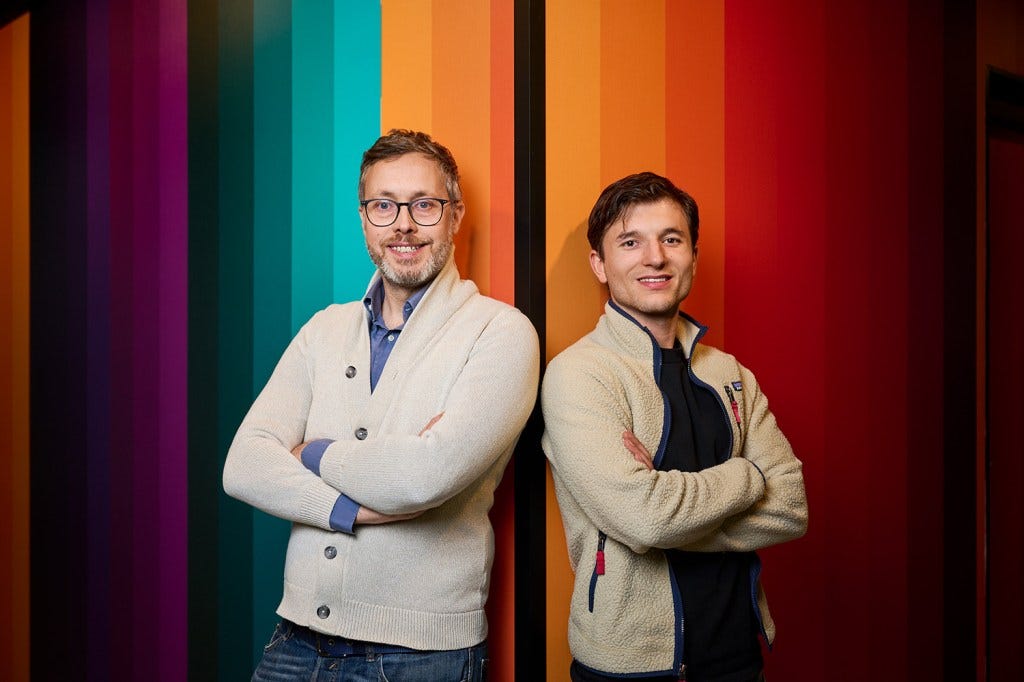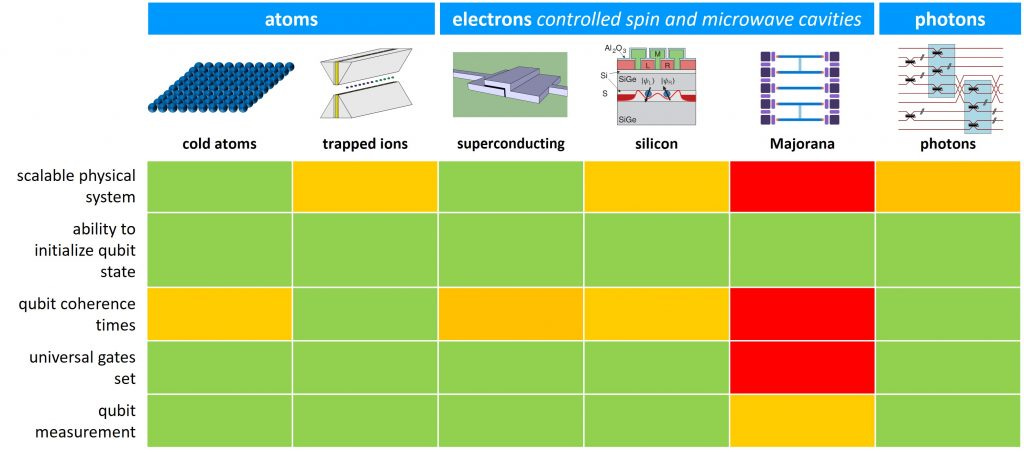The Week in Quantum Computing - March 10th - IQM, Multiverse Computing, NTT & Riken
Issue #225
Quick Recap
This week brought major funding and strategic milestones. In March 2025, VTT and IQM unveiled Europe’s first 50-qubit superconducting quantum computer in Finland with a €20.7 million government investment, fostering spin-offs like Arctic Instruments and SemiQon. The Spanish Government committed 67 million euros to Multiverse Computing for AI solutions, while Dutch startup QuantWare secured €20 million to expand its 3D VIO architecture. BMO Financial Group, with US$1.4 trillion in assets, plans to adopt quantum by late 2025, and Italy’s Ministry of University and Research opened public consultation on its National Strategy for Quantum Technologies. Research and product updates dominated headlines. NTT, the University of Tokyo, Kyushu University, and RIKEN announced a halved-qubit architecture. QCentroid launched its Quantum Computing Readiness Assessment Tool at MWC 2025, and Marco Roth and collaborators released AutoQML to automate QML pipelines. Microsoft showcased a Majorana-based fault-tolerance blueprint a few weeks ago, although Dan Vergano cautioned that robust evidence remains a concern. Overall, these advances, investments, and government plans illustrate growing momentum in 2025, bringing quantum closer to meaningful impact.
The Week in Quantum Computing
Paper: AutoQML: A Framework for Automated Quantum Machine Learning
Marco Roth, David A. Kreplin, Daniel Basilewitsch, João F. Bravo, Dennis Klau, Milan Marinov, Daniel Pranjic, Horst Stuehler, Moritz Willmann, and Marc-André Zöller present “AutoQML” in 2025. “We introduce AutoQML, a novel framework that adapts the AutoML approach to QML,” they state. The paper showcases the QML library sQUlearn to build end-to-end pipelines in four industrial use cases, demonstrating strong results against classical ML. By automating pipeline construction, the authors illustrate quantum’s emerging capability to diminish development barriers. It marks a pivotal step for quantum’s practical adoption this year.
https://arxiv.org/abs/2502.21025v1
VTT and IQM launch first 50-qubit quantum computer developed in Europe
In March 2025, VTT and IQM unveiled Europe’s first 50-qubit superconducting quantum computer in Finland, backed by a €20.7 million government investment. “Developing and building a 50-qubit quantum computer demonstrates that Finland is one of the global leaders in the field,” said VTT’s Erja Turunen. IQM Co-CEO Dr. Jan Goetz called the delivery “a significant milestone in our technology roadmap towards large-scale quantum computing.” Researchers and companies can now access it via VTT’s service to drive quantum applications in materials modeling, optimization, and AI. This achievement advances Finland’s quantum expertise, with spin-offs like Arctic Instruments and SemiQon emerging.
QCentroid Announces the Quantum Computing Readiness Assessment Tool at MWC
At MWC 2025, QCentroid unveiled its Quantum Computing Readiness Assessment Tool, offering companies “a clear and actionable assessment of their readiness to adopt quantum computing solutions,” says QCentroid. These solutions, including the Use Cases and Strategy Generator and the Use Cases Solutions Explorer, help businesses gauge potential quantum applications, optimize complex processes, and gain strategic insights. The tool’s unveiling underscores the accelerating demand for quantum expertise in today’s technological landscape, specifically in 2025. As quantum capabilities evolve, QCentroid’s initiative is set to guide businesses toward quantum advantage.
Dutch startup QuantWare seeks to fast-track quantum computing
In 2025, Dutch startup QuantWare, founded in 2020 as a spin-out of TU Delft and QuTech, raised €20M in Series A to power quantum computing solutions for clients in 20 countries. Its 3D architecture, VIO, aims to scale qubits on a single QPU, addressing a crucial challenge. By integrating quantum error correction via Contralto-A, “the missing link in scaling up QPUs,” CEO Matthijs Rijlaarsdam says, the startup fosters the Netherlands’ quantum ecosystem. “There is a large and valuable class of problems that even a gigawatt AI cluster will not be able to solve — but quantum computers will,” he adds. As Europe’s funding supports deeper R&D, the quest for millions of qubits accelerates.
https://techcrunch.com/2025/03/03/dutch-startup-quantware-seeks-to-fast-track-quantum-computing/
NTT Quantum Computing Architecture Separating Memory And Processor For Efficient Fault-Tolerant Computation
Researchers from NTT, the University of Tokyo, Kyushu University, and RIKEN in 2025 have unveiled a quantum architecture that halves the needed qubits compared to conventional circuit-based designs. This separation of memory and processor employs a load-store approach, improving memory efficiency to around 90% while raising compute time by only 5%. “This is a major step forward toward large-scale fault-tolerant quantum computing,” said PM Tsuyoshi Yamamoto. Presenting at the 31st IEEE International Symposium, the team showcased how fundamental computer architecture principles can reduce resource overhead by about 40%. “This result is key to bridging the gap between theory and implementation,” added Masato Oashi.
https://quantumzeitgeist.com/ntt-quantum-computing/
Spanish government invests €67M in Multiverse Computing
In 2025, the Spanish Government invests 67 million euros in the Basque startup Multiverse Computing through the Society for Technological Transformation. Minister Óscar López announced at the Mobile World Congress that Multiverse’s solutions achieve AI comprehension “above 90%” and could reduce data-center power usage by 50%. Founded by Román Orús, Enrique Lizaso-Olmos, and Sam Mugel, the company leverages quantum algorithms compatible with classical systems to address challenges in finance, manufacturing, and more. Their platform CompactifAI compresses large models, exemplifying cost-effective quantum-inspired AI. With 72 patent applications, Multiverse Computing’s partnership with IBM’s upcoming San Sebastián supercomputer underscores Spain’s potential to lead Europe’s quantum agenda.
BMO to Deploy Quantum Computing Technology by Year’s End, Says Chief AI Officer
BMO Financial Group, managing US$1.4 trillion in assets, plans to implement quantum computing by late 2025, says Chief AI Officer Kristin Milchanowski. The bank joined IBM Quantum Network, citing IBM’s dependable roadmap to achieve “enough compute power” for “really useful algorithms.” Milchanowski stresses, “We are in quantum because we do believe that it holds transformational potential.” She also notes quantum’s “state of utility,” offering tangible benefits in areas like portfolio optimization and risk management. T
First draft of Italy's quantum strategy
The Ministry of University and Research (MUR) has released a first draft of Italy’s National Strategy for Quantum Technologies, opening it for public consultation. “This document reaffirms Italy’s intention to boost investments in research and innovation,” said Minister Anna Maria Bernini upon signing the European Declaration on Quantum Technologies. The Working Group, including Paolo De Natale and Alessandro Zavatta (CNR-INO), and institutions like the Ministry of Defence and the National Cybersecurity Agency, aims to strengthen Italy’s quantum computing, simulation, metrology, and sensing capabilities. Participants can submit input to define guidelines that shape the nation’s technological future.
https://www.eurekalert.org/news-releases/1075365
NTT and RIKEN introduce a new load-store architecture for quantum computing
NTT and RIKEN have introduced a new load-store architecture for quantum computing, which could streamline qubit data exchange. This system aims to optimize memory access and improve gate operations, potentially reducing error rates and enabling more complex algorithms. By employing a load-store model, developers may find it easier to leverage quantum advantages in fields like cryptography, materials science, and AI. Although specifics remain scarce, this collaboration between two leading institutions highlights continued hardware innovation in quantum computing. Such progress promises to bolster efforts toward more scalable, high-performance quantum systems in 2025 and beyond.
Inside Microsoft Majorana-1
On February 19, 2025, Microsoft revealed a blueprint for fault-tolerant quantum computers using Majorana fermions, introduced the “Majorana-1” chip with a qubit built from four Majorana Zero Modes, and showcased a Nature paper by Justin Zilke et al. on measuring these exotic particles. Bill Gates hailed “useful quantum computers…just years away,” sparking comparisons to Google Willow, Amazon’s Ocelot cat-qubits, and PsiQuantum’s Omega photonic chips. Reactions were mixed, partly because of Microsoft’s past topological research missteps and skepticism from topological condensed matter scientists. “We have created a new state of matter,” said Chetan Nayak, underscoring Microsoft’s bold claims amid the race to scale quantum hardware. This technology could redefine error resilience if proven feasible.
https://www.oezratty.net/wordpress/2025/inside-microsoft-majorana-1/
Quantum Confusion Keeps Coming with Qubits
In 2025, Dan Vergano highlights ongoing uncertainty around quantum computing claims. “Seems like it’s always five years away,” says one financial observer, while Nvidia’s Jensen Huang pegs it at 20. Microsoft, Google, and Amazon reveal new topological, transmon, and “cat” qubit approaches, but replicable evidence remains elusive. Nature’s peer review disclaimed definite Majorana zero mode proof, recalling Microsoft’s 2018 retraction. Mark Zuckerberg questions quantum viability, and IBM’s David DiVincenzo cautions, “There’s lots of physics between here and a working quantum computer.” Achieving million-qubit systems remains a distant goal 45 years after Richard Feynman’s challenge. This ever-expanding race continues to captivate 2025’s tech landscape, reflecting how complexity still challenges quantum computing’s transformative promise.
Rigetti Computing Reports Fourth Quarter and Full-Year 2024 Results
Rigetti Computing posted 2024 Q4 revenue of $2.3M and net loss of $153M. The firm announced a major collaboration with Quanta Computer, each pledging over $100M to advance superconducting quantum technology in 2025. CEO Dr. Subodh Kulkarni said, “We believe superconducting qubits are the winning modality,” underscoring Rigetti’s 84-qubit Ankaa-3, which reached 99.0% iSWAP gate fidelity. Quanta will also invest $35M in Rigetti, pending approval. Montana State University acquired Rigetti’s Novera QPU, while a Nature Physics publication highlighted an optical transducer readout method in partnership with QphoX and Qblox. Amid these developments, Dr. Kulkarni noted the firm’s “modular approach” fosters broader industry collaboration, pushing quantum boundaries and positioning superconducting architectures for practical breakthroughs in 2025.
Sussex could become the UK's 'Quantum Silicon Valley'
University of Sussex and Greater Brighton’s plan to create a “Quantum Silicon Valley” in Sussex gained momentum in 2025. The initiative, praised by Baroness Jones (Minister for Future Digital Economy) as a way to “improve lives and boost the UK economy,” follows projections that quantum breakthroughs could raise the UK’s GDP by £212 billion by 2045. Professor Winfried Hensinger, director of the Sussex Centre for Quantum Technologies, calls quantum computing a “generational opportunity,” emphasizing the need for sustained government investment. Sussex’s spin-out, Universal Quantum, has attracted around £100 million, underscoring the region’s growing influence. Professor Sasha Roseneil, Vice-Chancellor at Sussex, applauds the university’s robust training programs, fostering the next generation of quantum experts poised to drive transformative innovation.
https://www.theargus.co.uk/news/24979850.sussex-become-uks-quantum-silicon-valley/
Superconducting Quantum Computing Beyond 100 Qubits
B. Sanders notes that both Google’s Willow and Jian-Wei Pan’s Zuchongzhi 3.0 from USTC each contain 105 superconducting qubits. Pan’s team collapses a billion-year classical simulation into 100 seconds. Google’s “Meet Willow, our state-of-the-art quantum chip,” blog post by H. Neven cites 10^25 years for an equivalent classical run. These processors underscore global competition and complex geopolitics, with 2025 breakthroughs in error correction and qubit coherence. In 2021, Pan’s group achieved quantum advantage using a 66-qubit device, intensifying the race. Momentum behind 105-qubit processors demonstrates powerful strides toward fault tolerance without overshadowing lingering challenges, suggesting that a practical quantum era could emerge sooner than expected.
https://physics.aps.org/articles/v18/45
AI and adaptive optics propel free-space quantum communication by solving atmospheric turbulence challenges
Engineers at MIT integrated AI-driven wavefront shaping with advanced optics to achieve a 200% improvement in free-space laser communications, bridging a critical gap for quantum computing in 2025. “We’ve refined beam steering to reduce atmospheric distortion,” said lead researcher Dr. Liu, emphasizing the potential for scalable quantum encryption. The team used neural networks to adapt wavefront corrections in real time, ensuring stable data transfer over longer distances. IBM laboratory collaborations confirmed these findings, underscoring the importance of robust free-space channels for quantum data exchange. Through AI-augmented optical systems, quantum computing connectivity gains momentum, powering more reliable entanglement-based networking and secure communication. Such synergy between AI and photonics is crucial for the next leap in quantum computing readiness this year.
https://phys.org/news/2025-03-ai-optics-propel-free-space.html
China to set up national venture capital guidance fund for deep tech, including Quantum
China’s National Development and Reform Commission (NDRC) recently announced a state-backed venture capital guidance fund to accelerate quantum computing research. According to the NDRC spokesperson, “This initiative is aimed at fostering groundbreaking innovations in quantum technologies.” The move signals China’s commitment to remain at the forefront of advanced computing. The National Quantum Laboratory in Beijing, led by Prof. Li Wei, views this as “a decisive step” to facilitate industry-academia collaboration. Experts say these 2025 investments highlight robust support for transformative developments that could soon outperform classical systems, spurring demand for skilled researchers and secure infrastructure.



